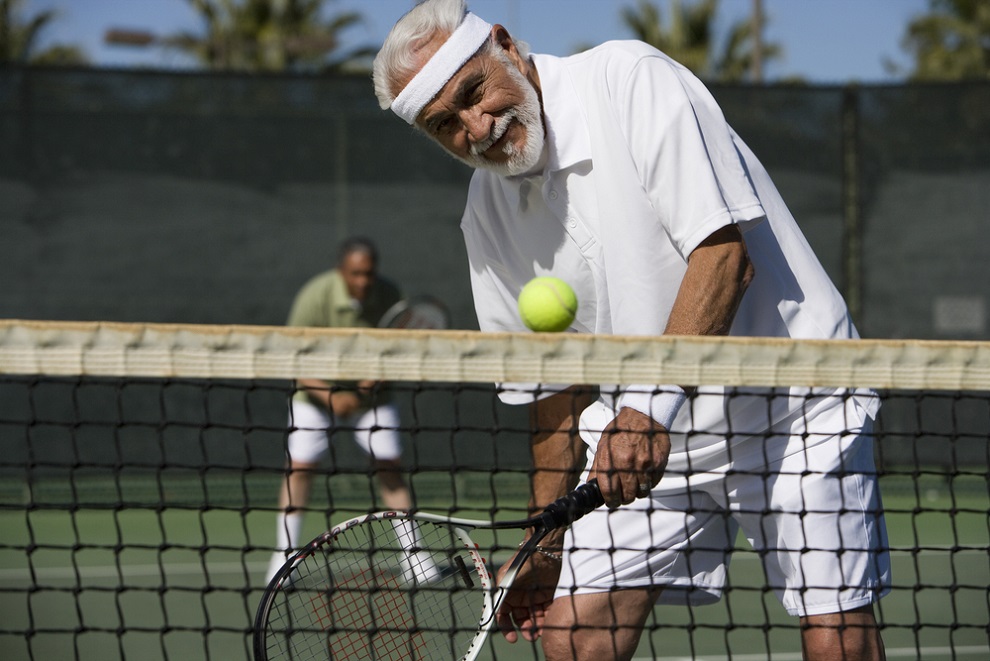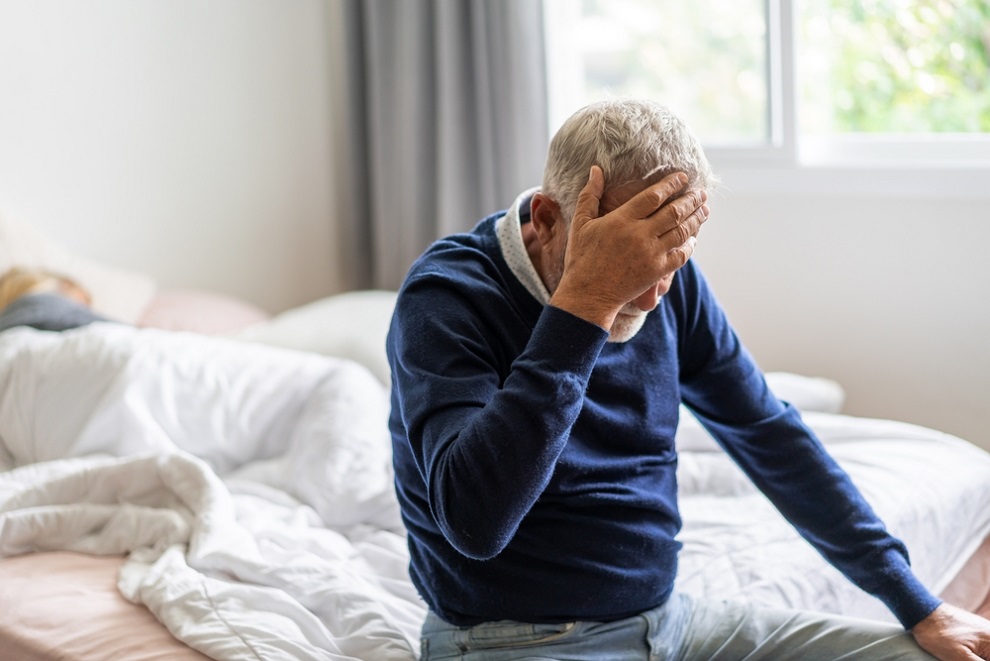Medically reviewed by
Dr. Peter Fotinos, MD
Chief Medical Officer at Male Excel | Hormone Therapy & Men and Women's Health Physician
Reviewed on: July 28, 2025
Quick Summary
- Reaction time naturally slows with age, affecting daily activities like driving and cooking.
- Cognitive changes, such as slower brain processing and decision-making, play a significant role.
- Physical declines in muscle strength and coordination delay physical responses.
- Men generally maintain slightly faster reaction times, but both sexes experience age-related slowdown.
- Regular exercise, good sleep, and mental challenges help maintain sharper reaction time.
- Healthy habits can slow or even improve declining reaction time over time.
Think about the last time you had to slam on the brakes or step over a crack in the sidewalk. That quick reflex? It's called reaction time, which becomes more important as we age. A slower reaction time can make all the difference between a close call and a serious accident.
As people get older, their reaction time often becomes slower. This isn't just because of aging. It happens because the brain takes longer to process information and send signals to the body. A current study found that older adults react more slowly due to changes in thinking and movement control. This can affect sensorimotor shifts that cause shifts in daily activities like driving, cooking, or walking in busy places.
The good news is that these changes aren't permanent or unchangeable. Older adults can still stay sharp with the proper habits. Regular exercise, brain games, and good sleep can help keep the brain and body working well even in old age.
This blog discusses how does age affect reaction time, what the science shows, and what you can do to stay quick and alert. We'll also explain different types of reaction time and how they change with age.

How Aging Affects Reaction Time
Your brain handles a lot every time you respond to something, whether you're hitting the brakes or catching a falling glass. As you get older, your reaction time tends to slow down. This happens because the brain and nervous system don't work as fast as they used to.
One reason reaction time slows with age is the loss of brain cells in areas that control decisions and movement. The frontal lobe changes with age, which helps you focus and pick the right response. This frontal decline can make it harder for older adults to react quickly in everyday situations.
Another reason is the drop in fluid intelligence, which is your brain's ability to handle new problems and think quickly. As this declines, so does processing speed. That means it takes longer to notice something and decide what to do. For example, an older adult might take a few extra seconds to react to a green light or someone suddenly crossing their path.
The body also slows down because the nervous system changes. Motor control, how the brain sends messages to muscles, can become less efficient. When the brain decides to act, the body may not respond as fast or as accurately as it once did.
Research on Reaction Time and Aging
Research shows that older adults often respond more slowly to sights and sounds than younger individuals. This change is not sudden. Instead, it builds up over many years, leading to slower and sometimes more varied responses. [2]
One of the most detailed projects in this field is the Baltimore Longitudinal Study of Aging. This study followed over 1,200 adults between the ages of 17 and 96. In this project, researchers tracked adults over 8 years and measured how quickly they responded to simple tasks, like pressing a button after seeing a light or hearing a sound. Results showed a steady drop in speed over time, not a sharp decline.
It also deduced that men were generally faster than women, but both showed more variation in reaction time as they aged. Errors also increased, showing that slower reactions did not result from trying to be more accurate. These patterns suggest a general slowing of brain activity with age, especially for tasks that rely on decision-making and speed. [3]
These significant effects confirm that slowing is real, measurable, and tied closely to brain function. As new research continues, these findings offer reliable insights for shaping brain health strategies and managing response speed over time.
Types of Reaction Time and How They Differ with Age
Scientists break down reaction patterns into different types to better understand how everyday responses change for older individuals and why certain actions take longer than they used to.
Simple Reaction Time
Simple reaction time means reacting to one expected thing. For example, pressing a button when a light turns on. It's fast because there's no thinking involved, just see and react.
Choice Reaction Time
Choice reaction time differs significantly from simple reaction time. It asks a person to choose between two or more options. For example, pressing one button for a green light and another for a red light. This kind of task takes more time because the brain needs to decide what to do.
With an aging brain, both simple and choice reaction times slow down. However, the choice reaction time is more affected. That's because it takes more brain power. Older individuals often need more time to decide and respond. These changes are not just physical. The brain also takes longer to process information with age.
Slower reaction times aren't just about mental choices. Movement initiation time, or the brief moment between deciding to act and starting the motion, increases with age. The layout of tasks, like how the response button is positioned, or how complex a visual stimulus is, also plays a role in reaction performance.
But how do researchers measure changes? They do so by using error bars in studies to show how much a person's reaction time changes from one trial to another. Older adults often show more variation, meaning their normal reaction times are less steady.
What Causes Slower Reaction Times in Older Adults?
Reaction time doesn't just change by chance, and it reflects more profound changes in both the brain and body as people age.
These changes don't appear all at once. They build gradually, often starting in midlife and becoming more noticeable later. Several factors influence slower reaction times in older adults, and most fall into two main categories: cognitive function and motor ability.
Cognitive Function
The aging brain usually shows a drop in processing speed. This means it takes more time to notice something, decide what to do, and act. When brain health declines, this process slows down even more.
Some older adults also develop mild cognitive impairment, affecting memory, attention, and decision-making. These mental skills are key to fast and correct responses.As a result, slower reaction times are common, especially when quick thinking is needed.
Motor Responses and Movement
Physical changes also contribute to age-related slowing. As people age, motor responses, such as pressing a button or moving a hand, tend to get slower. Muscle strength, balance, and coordination may decline. So even when the brain makes a decision quickly, the body might not respond as quickly. This combination of mental and physical delays leads to a noticeable drop in reaction speed.
Age Differences in Reaction Speed
Younger adults respond faster and with more accurate results. Older adults often show age-related increases in reaction times and greater variation from one response to the next. Even in simple tasks, their overall performance can be slower. This gap becomes wider in more complex tasks that require choosing between options.
Every Day Effects of Slower Reactions
These age-related changes in processing speed and motor ability can affect daily life. Tasks like driving, using tools, or reacting to sudden events may become harder. Still, understanding age-related declines gives caregivers the insight to create safer environments and helpful activities that support older adults as they age.

Lifestyle Factors That Maintain Reaction Speed
Reaction speed naturally slows with age, but daily habits can influence how much and how quickly that happens. Several lifestyle factors, like movement, nutrition, and mental activity, help support both speed and accuracy. By making small, consistent changes, older adults can reduce the impact of age-related slowing.
Stay Active
Exercise helps maintain motor skills and reduces slower response times linked to aging. Walking, swimming, or light strength training supports the brain and body. Regular physical activity maintains healthy testosterone levels, which can support muscle control and overall energy, influencing how quickly the body reacts.
Eat Foods That Help the Brain
A healthy, balanced diet can protect the aging brain and support quicker reaction times. Nutrients such as B vitamins, omega-3s, and antioxidants help slow age-related changes. These foods support thinking, memory, and accurate responses.
Keep the Brain Busy
Challenging the mind with puzzles, memory games, or dual-task exercises helps maintain processing speed. These activities limit age-related slowing by encouraging the brain to stay flexible and alert. Even 10 minutes a day can make a significant difference over time.
Rest and Lower Stress
Sleep is important for fast, accurate responses. Poor sleep can cause slower reaction times and brain fog. Stress also affects how quickly and clearly we respond. Managing both supports better brain function.
Ask for Help When Needed
Some age-related changes in reaction times may be hard to notice at first. If you feel slower in daily tasks or struggle with focus, it's worth talking to a doctor.
Medical professionals can check for signs of mild cognitive changes or shifts in hormone levels. They may also suggest therapies, physical medicine, or brain training options that simulate your motor skills and match your needs. Early guidance can help you stay active, alert, and more confident.
Training Techniques to Improve Reaction Time
You can improve how fast you respond, no matter your age. Regular brain and body practice can improve the speed and accuracy of responses. These methods are used in physical medicine and sports and help with daily tasks.
Mental Exercises to Train the Brain
Brain training programs focus on memory, focus, and quick thinking. These exercises help the brain respond faster during tasks. Many programs are online and mimic real-life situations. People who use them often notice better reaction times and more correct responses.
Reaction Drills to Improve Motor Skills
Physical drills also help. Simple tasks like tapping a button when a light flashes or catching a ball require trained motor skills. These drills improve how fast the body reacts to brain signals. Just a few minutes of practice a day can help. This is useful for anyone who notices slower response times with age.
Measure and Track Your Progress
Tracking your progress helps you stay motivated. You can use a stopwatch, an app, or a simple home test to measure reaction times. These tools show how long it takes to respond and whether your training works. Lab tests are available for more accuracy, but home tools work fine for most.
Supporting Better Reaction Time Through Daily Habits
Improving reaction time doesn't require a complete life overhaul. Small changes in daily habits can make a real difference. This applies across all individual subjects, regardless of age or ability.
While age-related changes in response may occur, they are not fixed outcomes. People who emphasize lifestyle, consistent training, and cognitive activity often maintain quicker and more accurate responses. These habits also benefit other areas of life, including focus, mood, and long-term brain health.
Tracking progress also helps. Simple home tools can measure reaction time and show if your efforts are working. Over time, consistent practice can build faster, more confident responses.
If you're looking to take a more active role in maintaining your mental and physical sharpness, Male Excel offers support designed for men at every aging stage. From personalized hormone treatments to expert-guided wellness plans, their approach helps you stay focused, strong, and ready to respond.
If you want to stay sharp, strong, and quick as you age, Male Excel can help. Start with our quick online hormone assessment and see how personalized care can support your brain and body.
References
1. Ketcham CJ, Stelmach GE. Movement Control in the Older Adult. In: National Research Council (US) Steering Committee for the Workshop on Technology for Adaptive Aging; Pew RW, Van Hemel SB, editors. Technology for Adaptive Aging. Washington (DC): National Academies Press (US); 2004. 3. Available from: https://www.ncbi.nlm.nih.gov/books/NBK97342/
2. Wolkorte, R., Kamphuis, J., & Zijdewind, I. (2014). Increased reaction times and reduced response preparation already start at middle age. Frontiers in Aging Neuroscience, 6. https://doi.org/10.3389/fnagi.2014.00079
3. Fozard, J. L., Vercruyssen, M., Reynolds, S. L., Hancock, P. A., & Quilter, R. E. (1994). Age differences and changes in reaction time: The Baltimore Longitudinal Study of Aging. Journal of Gerontology, 49(4), P179-P189. https://doi.org/10.1093/geronj/49.4.p179

Get TRT Online
Optimize Your Hormones





